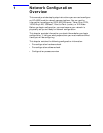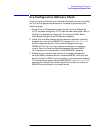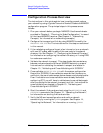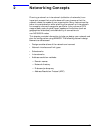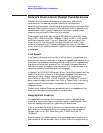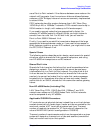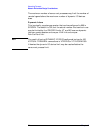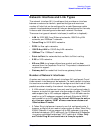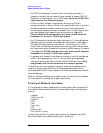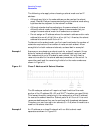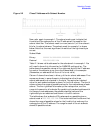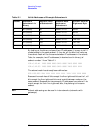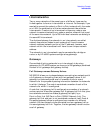
Chapter 2 25
Networking Concepts
Network Interface and Link Types
Network Interface and Link Types
The network interface (NI), the software that provides an interface
between a node and a network, specifies the type and maximum
number of links that can be configured for a node. Because a node’s
network interface determines what links can be configured for the node,
links are said to be configured underneath network interfaces.
There are nine types of network interfaces (in addition to loopback):
• LAN for IEEE 802.3 and Ethernet networks, 100VG-AnyLAN
networks, and 100Base-T networks.
• Token Ring for IEEE 802.5 networks.
• FDDI for fiber optic networks.
• 100VG-AnyLAN for 100VG-AnyLAN networks.
• 100Base-T for 100Base-T networks.
• Point-to-Point for networks that use Point-to-Point routing.
• X.25 for X.25 networks.
• NS over SNA is no longer offered as a product and has been
removed from the Corporate Price List. The product is obsolete with
no plans for support.
• Gateway half for nodes that function as gateway halves.
Number of Network Interfaces
A system can have up to 48 network interfaces (NI) configured. One of
these network interfaces must be loopback. For each network interface,
the maximum number of links you can configure and the kinds of links
possible are determined by the network interface type, as follows:
• A LAN network interface can have only one link configured under it;
however, a single link can reach a large number of nodes. ThickLAN
cable supports up to 100 nodes per segment; ThinLAN cable can be
used for up to 30 nodes per segment; and each Ethertwist 3000/iX
can be used for up to 50 nodes. Up to two LAN NIs can be active
at a time per system, 100BT allows a maximum distance of
100m between 2 nodes.
• A Token Ring interface can have only one link configured under it;
however, a single link can reach a large number of nodes. Token Ring
3000/iX Network Link can support up to 250 nodes per ring using
shielded twisted pair (STP) cabling at 4 or 16 Mbps and 50 nodes per
ring using unshielded twisted pair (UTP) cabling at 4 Mbps. Only
one Token Ring NI can be active at a time per system.



